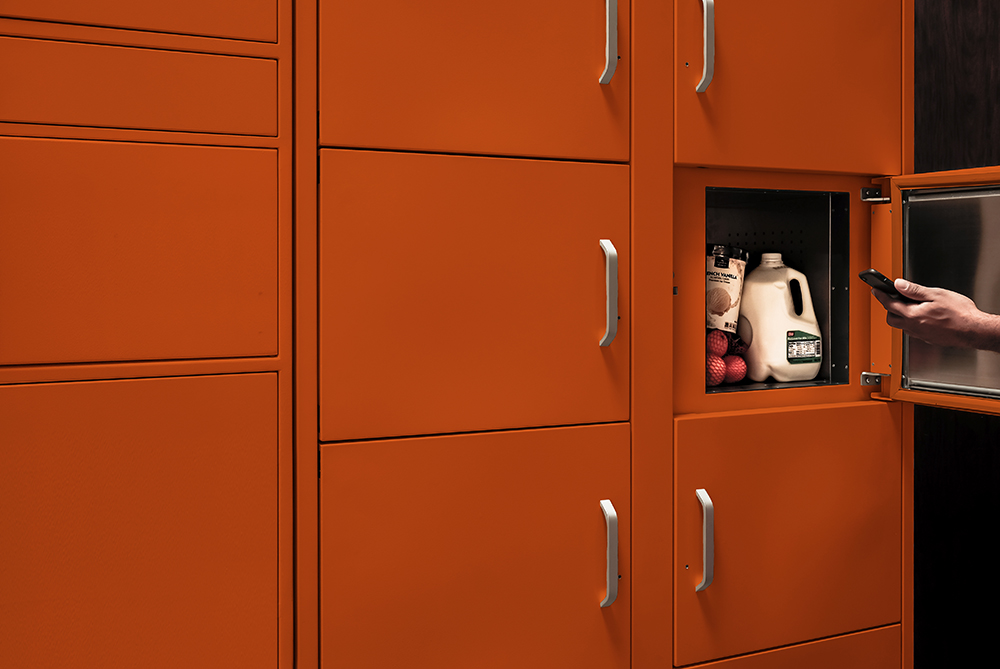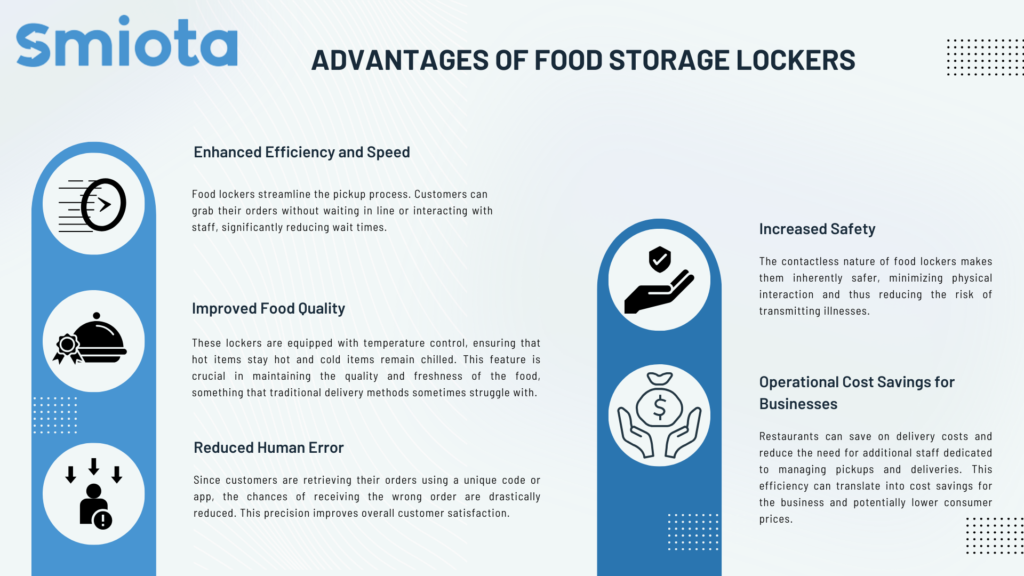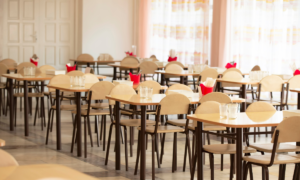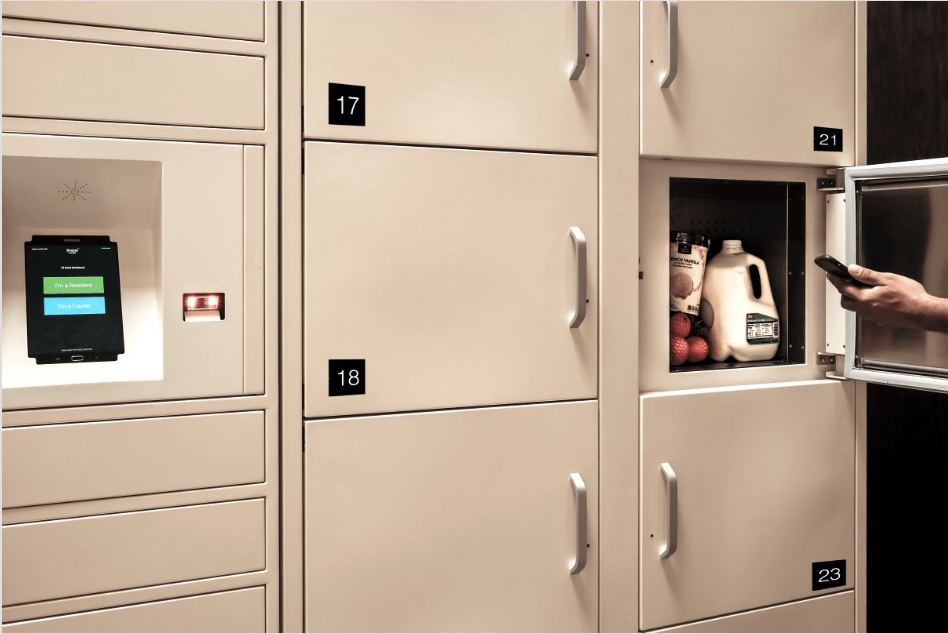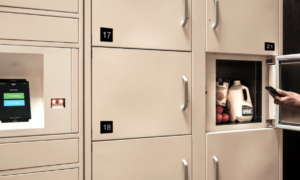In an era where convenience and speed are paramount, the food industry is constantly evolving to keep pace with modern consumer demands. One significant innovation reshaping the food pickup and delivery landscape is the emergence of food lockers. These lockers represent a fusion of technology, convenience, and efficiency, offering a glimpse into the future of how we access our meals. In this blog post, we explore food lockers, their advantages, factors to consider before choosing a food locker system, and how they redefine the future of food pickup and delivery.
What are Food Lockers?
Food lockers are secure, temperature-controlled storage units designed to hold food orders until they are picked up by customers or delivery personnel. They are generally located in easily accessible areas, such as outside restaurants, malls, university lobbies, or transit stations. These lockers can be operated via a digital interface, where customers receive a unique code or use a mobile app to open the locker containing their order.
Smiota’s food storage locker
This system addresses several challenges faced by traditional food pickup and delivery methods. For instance, it reduces human contact, which became a significant concern during the COVID-19 pandemic. Food lockers also mitigate issues like order mix-ups, delays, and food quality degradation that can occur with prolonged transit times.
Given these apparent benefits in managing common food delivery issues, let’s move on to the specific advantages of food storage lockers, particularly in how they revolutionize the efficiency and safety of food handling.
Advantages of Food Storage Lockers
Advantages of food lockers
- Enhanced Efficiency and Speed: Food lockers streamline the pickup process. Customers can grab their orders without waiting in line or interacting with staff, significantly reducing wait times.
- Improved Food Quality: These lockers are equipped with temperature control, ensuring that hot items stay hot and cold items remain chilled. This feature is crucial in maintaining the quality and freshness of the food, something that traditional delivery methods sometimes struggle with.
- Reduced Human Error: Since customers are retrieving their orders using a unique code or app, the chances of receiving the wrong order are drastically reduced. This precision improves overall customer satisfaction.
- Increased Safety: The contactless nature of food lockers makes them inherently safer, minimizing physical interaction and thus reducing the risk of transmitting illnesses.
- Operational Cost Savings for Businesses: Restaurants can save on delivery costs and reduce the need for additional staff dedicated to managing pickups and deliveries. This efficiency can translate into cost savings for the business and potentially lower consumer prices.
Factors to Consider While Choosing a Food Locker
When selecting a food locker, consider the following factors to ensure your choice meets your specific needs for food storage and preservation.
- Location: The convenience of a food locker is heavily dependent on its location. Ideally, they should be situated in areas that are easily accessible and secure.
- Size and Capacity: Depending on the volume and variety of food that needs to be stored, the size and number of compartments in a locker are critical. A good food locker setup should accommodate everything from small snack orders to large family meals.
- Temperature Control Capabilities: A high-quality food locker should have robust temperature control mechanisms to ensure food remains fresh and at the correct temperature, whether hot or cold.
- Security Features: Security is paramount since food lockers are often in public or semi-public spaces. To prevent theft or tampering, lockers should have secure access, possibly linked to a customer’s order details.
- User Interface and Accessibility: The system used to interact with the locker, whether an app or a physical interface, should be user-friendly, reliable, and accessible for all users, including those with disabilities. For instance, Smiota offers an easy-to-use mobile application that customers can use to manage their food pickup.
The advent of food lockers represents a significant leap in the evolution of food pickup and delivery services. This innovation reshapes how we interact with our favorite eateries, offering convenience, efficiency, and safety.
Food Lockers – Redefining the Future of Food Pickup and Delivery
Here’s an in-depth look at how food lockers are revolutionizing this space:
Enhanced Convenience and Flexibility
- Time-saving: Food lockers eliminate the need for customers to wait in line or interact with staff. Customers can place their orders online and pick them up from designated lockers at the customer’s convenience.
- 24/7 Access: Many food locker systems operate around the clock, allowing customers to collect their orders anytime, which is particularly beneficial for those with unconventional schedules. In fact, 24/7 availability is one of the key differentiators of Smiota’s temperature-controlled food lockers.
Improved Order Accuracy and Quality
- Automated Systems: With less human intervention in the ordering and pickup process, the chances of order mix-ups or errors are significantly reduced.
- Maintained Freshness: Advanced food lockers are equipped with temperature control features, ensuring that meals remain hot or cold as required, preserving taste and quality.
Contactless and Hygienic
- Minimizing Physical Interaction: The demand for contactless services has surged in the post-pandemic world. Food lockers provide a hygienic solution by minimizing human contact.
- Reduced Contamination Risk: The enclosed nature of lockers helps protect food from environmental contaminants and handling, promoting food safety.
Streamlined Operations for Restaurants
- Efficiency in Service: Food lockers allow restaurants to manage high volumes of orders more effectively, reducing the strain on staff during peak hours.
- Cost-Effective: By cutting down on delivery logistics and minimizing face-to-face interactions, restaurants can reduce operational costs.
Environmental Impact
- Reduction in Packaging Waste: With the decreased need for elaborate packaging required for traditional deliveries, food lockers can contribute to reducing packaging waste.
- Lower Carbon Footprint: By centralizing pickups and reducing delivery trips, food lockers can help lessen vehicle emissions associated with food delivery services.
Integration with Technology
- Smartphone Integration: Most food locker systems are integrated with mobile apps, allowing customers to track orders, receive notifications, and unlock their designated locker through their smartphones.
- Data Analytics: For restaurants, integrating food lockers with their management systems provides valuable data analytics, aiding in menu optimization and customer preference analysis.
Customized Customer Experiences
- Personalization: Food lockers can be programmed to remember customer preferences, making repeat orders more convenient and personalized.
- Branding Opportunities: They offer a new avenue for branding, as businesses can customize locker designs and interfaces to enhance brand visibility and customer engagement.
By offering a harmonious blend of technology, convenience, and efficiency, food lockers are setting new standards in how we think about food pickup and delivery. As technology evolves and integrates more seamlessly with our daily lives, it promises to streamline our dining experiences further, making them more enjoyable, efficient, and in tune with contemporary lifestyle demands.
Final Thoughts on Food Lockers
The future of food pickup and delivery is here, more innovative than ever before. The rise of food lockers is a testament to the dynamic nature of the food service industry and its responsiveness to evolving consumer needs and technological advancements. As we move forward, these systems will become more sophisticated, integrating with AI for predictive ordering and even robotics for food preparation and loading.
The environmental footprint of food delivery is already a key consideration. Future food locker systems might incorporate sustainable materials and energy-efficient designs, aligning with global efforts to reduce carbon emissions. Clearly, food lockers are not just a temporary fix or a niche trend; they represent a significant leap towards a more efficient, safe, and customer-friendly food pickup and delivery system.

